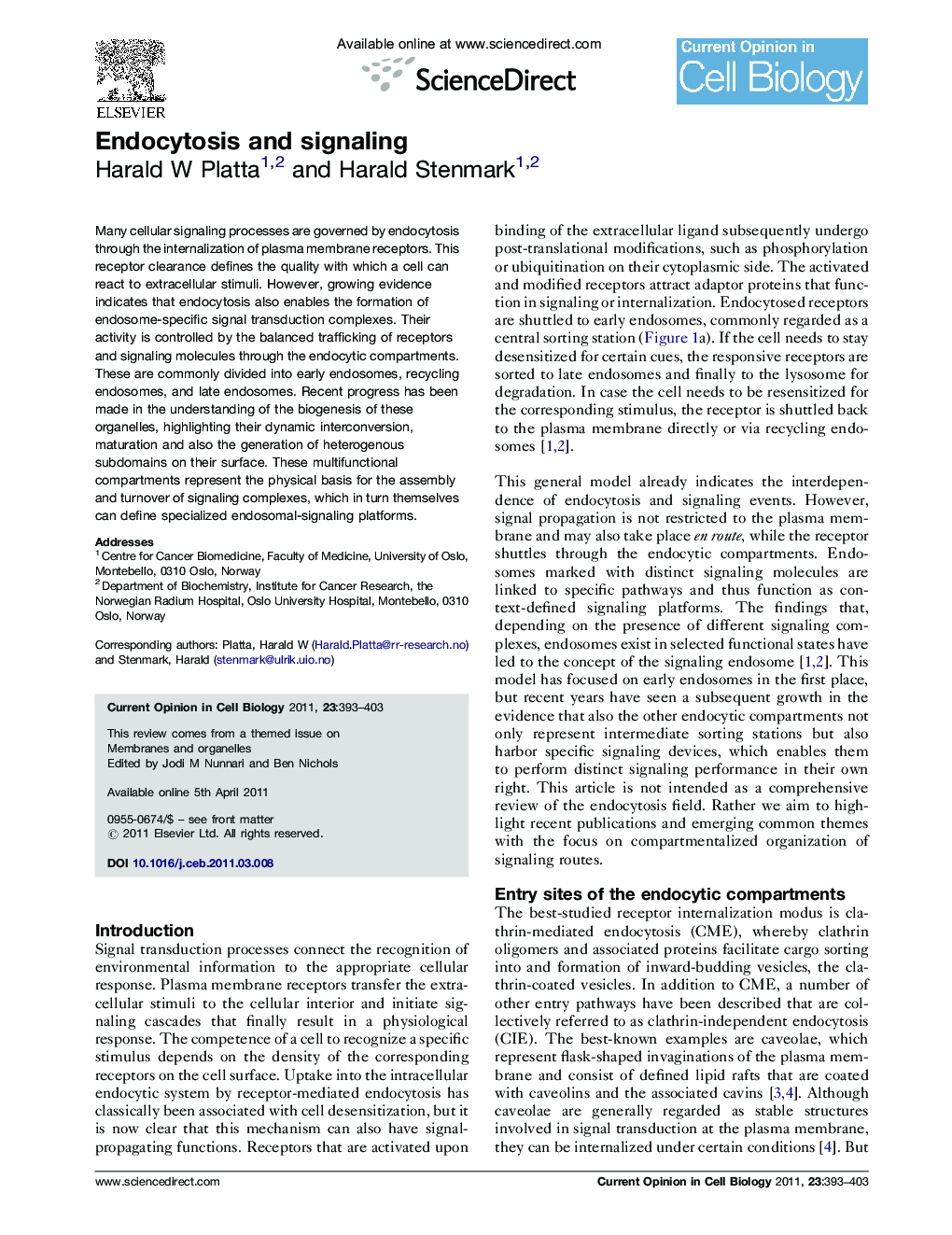| Article ID | Journal | Published Year | Pages | File Type |
|---|---|---|---|---|
| 2169883 | Current Opinion in Cell Biology | 2011 | 11 Pages |
Many cellular signaling processes are governed by endocytosis through the internalization of plasma membrane receptors. This receptor clearance defines the quality with which a cell can react to extracellular stimuli. However, growing evidence indicates that endocytosis also enables the formation of endosome-specific signal transduction complexes. Their activity is controlled by the balanced trafficking of receptors and signaling molecules through the endocytic compartments. These are commonly divided into early endosomes, recycling endosomes, and late endosomes. Recent progress has been made in the understanding of the biogenesis of these organelles, highlighting their dynamic interconversion, maturation and also the generation of heterogenous subdomains on their surface. These multifunctional compartments represent the physical basis for the assembly and turnover of signaling complexes, which in turn themselves can define specialized endosomal-signaling platforms.
► Receptor signaling can occur at endosomes ► Endosomal signaling can have different outputs than signaling at the plasma membrane ► Distinct receptors have different preferences for signaling from early, late, and recycling endosomes. ► Multivesicular endosomes control signaling by sequestering receptor tails away from cytosol, by sequestering cytosolic signaling components, and by serving as intermediates in exosome secretion.
